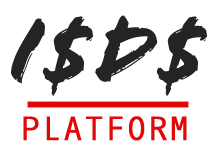Why agriculture remains a sticking point in EU-India trade talks
Euractiv | 10 March 2025
Why agriculture remains a sticking point in EU-India trade talks
by Sofia Sanchez Manzanaro
BRUSSELS – India and the EU kick off a new round of trade negotiations today, with the aim of finalising what could be Europe’s largest trade deal by the end of the year. But convincing New Delhi to open up its agricultural markets won’t be easy.
Talks resumed in 2022 after a nine-year hiatus and are now in their 10th round. As the European Commission accelerates trade deals amid growing geopolitical uncertainty, securing a deal with India - home to 18% of the world’s population - has become a top priority for Commission President Ursula von der Leyen.
A senior EU official recently confirmed that agriculture remains a "difficult issue" when discussing a free trade agreement with India, with New Delhi wary of the impact of liberalisation on its vulnerable rural population. Last October, German Economy Minister Robert Habeck even suggested that agriculture should be excluded from the deal to speed up the negotiations.
India and the EU have very different agricultural systems, particularly in terms of their importance for jobs and the economy.
In 2023, India’s agriculture sector accounted for nearly 16% of the country’s GDP and employed 44% of the country’s labour force. For the EU, agriculture represented 1.3% of the bloc’s GDP and 5% of jobs.
But despite being a major producer of staples such as rice and cereals, India is still struggling to feed its 1.4 billion people. The 2024 Global Hunger Index classifies the country’s hunger levels as “serious.”
Tariffs, cheese and whiskey
Tariffs are another battleground. The EU’s average tariff on agricultural goods is at 11.7%, while India’s is at 39.2%, meaning New Delhi will have to agree to steeper cuts.
India has long maintained a protectionist policy, imposing some of the world’s highest tariffs to protect its developing economy. Import tariffs are "India’s main tool" for supporting millions of small farmers, the senior researcher at the Heinrich Böll Foundation Ranja Sengputa wrote in an article.
"In particular, small farmers, including millions of women farmers, are likely to be outcompeted by subsidised agricultural products from the EU," wrote Sengupta.
The EU’s demand for market access for its traditional foods - including various types of cheese - could create significant challenges for India’s incipient dairy industry, she added.
But high tariffs also protect India’s beverage giants and discourage consumption of foreign products, especially spirits and whisky.
While India is a "very promising market", the largest in the world after China, it remains largely inaccessible due to 150% import tariffs, Ulrich Adam, director general of SpiritsEUROPE, told Euractiv.
While EU negotiators continue to push for tariff cuts, sector representatives expressed some optimism after India slashed tariffs on US bourbon by 50% in February to ease tensions with Washington.
"We need an agreement with an ambitious timetable to remove tariffs for key European sectors, including spirits," said Adam, while acknowledging that negotiations will be tough.
Sugar sector voices concern
European farmers are also concerned - particularly about Indian sugar imports, as the country is one of the world’s biggest producers.
When trade talks resumed in 2022, the European Parliament insisted that India remove its “enormous” sugar subsidies, following a WTO ruling that they breach international trade rules.
In a press statement issued last week, the European sugar manufacturers’ association CEFS and the sugar beet growers’ association CIBE said they "oppose" any further opening of the EU market to Indian imports.
Marie Christine Ribera, director general of the CEFS, warned that EU white sugar prices had already fallen by 35% in one year. With continued uncertainty from the Mercosur deal and trade shifts with Ukraine - both of which involve EU concessions on sugar - she argued that further concessions to India would “pour oil on the fire” and put additional strain on an industry that has lost an average of two factories a year since 2017.





